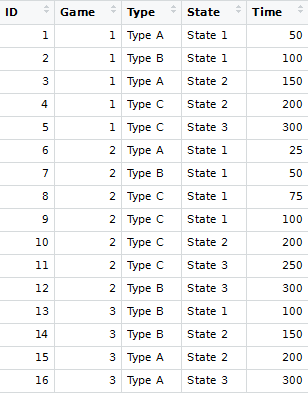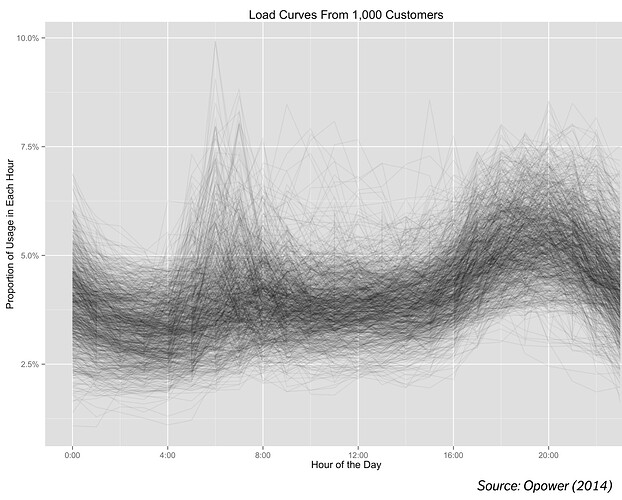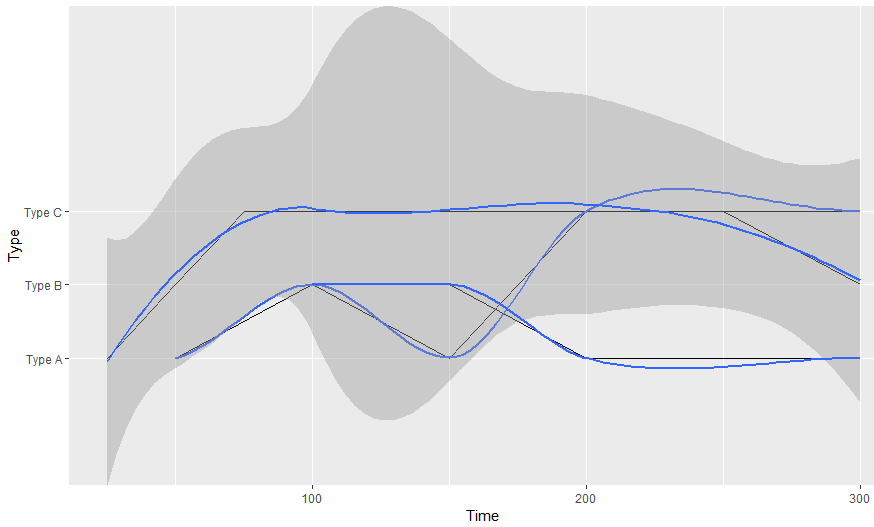Hi,
First I'd like to apologize for my bad english ! ![]()
I'm new to R studio and I'm trying to do something that looks hard to do..
I have a huge amount of data. My data is ordered like this :
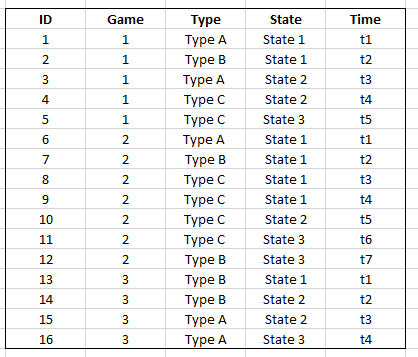
What I want to see is, on this example, 3 courbs (cause 3 games) with
X = State.
Y = Type .
Because I need to see the order of types :
Game 1 : [State 1] A > B [State 2] A > C [State 3] C
Game 2 : [State 1] A > B > C > C [State 2] C [State 3] C
Game 3 : [State 1] B [State 2] B > A [State 3] A
I know that its hard because they are only strings, so its possible for me to use the time as the X axis, but I still have a problem with this Y axis using types. (And to be honest I don't care about time since I only want to know the order of types).
Using ggplot2, the only thing that gives me a little amount of graphical representation is geom_point() which is not really what I want ![]()
The thing is, I know that it could probably work if I change my data like this :
Type A = 1
Type B = 2
Type C = 3
State 1 = 1
State 2 = 2
State 3 = 3
Or using Time instead of State, because now strings are numbers. But I think it should be a way to keep at least one axis with Strings (since they are repetables).
I also don't know how to separate games from my data. As you can see, there is 3 games in my example, but in reality I have thousands of games. I suppose there is a way (using a function probably ?), to create datas game by game.
I hope someone can help me find the solution ![]()
Stalki.

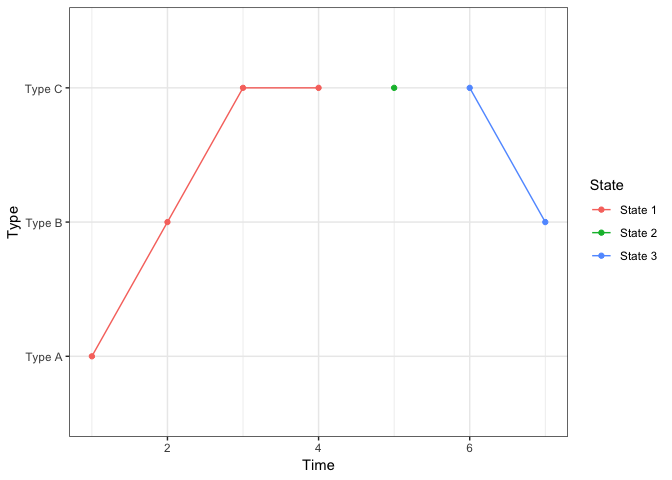
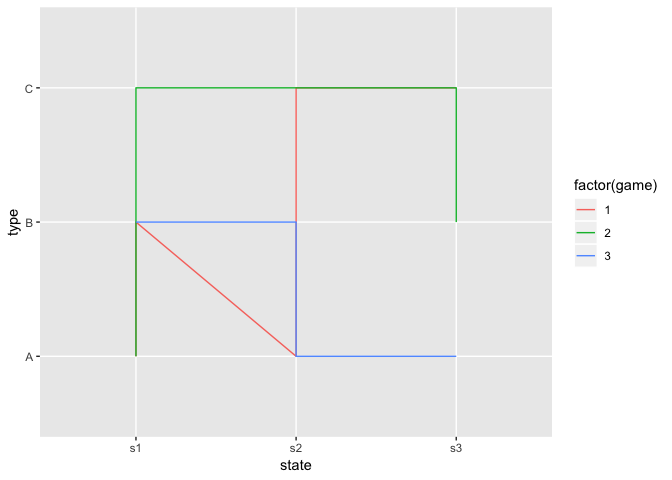
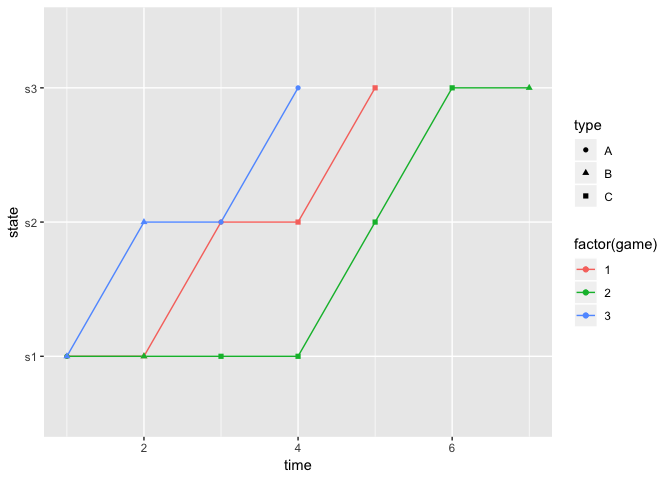
 I think I do it wrong but thanks adam83 & ron !
I think I do it wrong but thanks adam83 & ron !
 )
) )
)